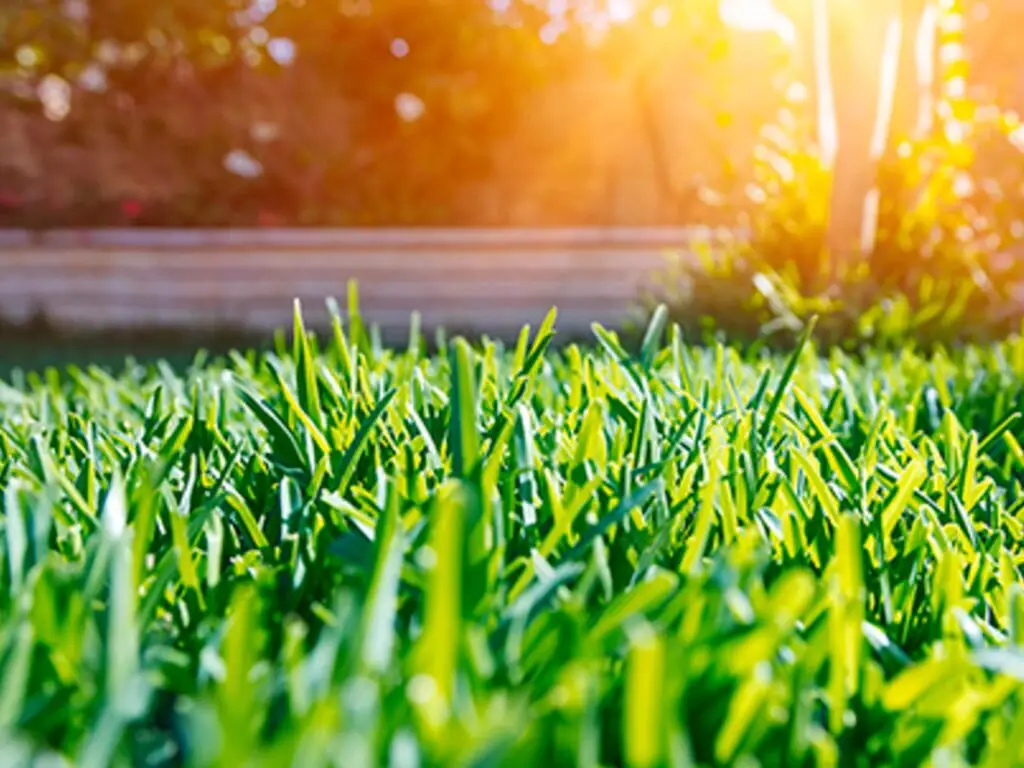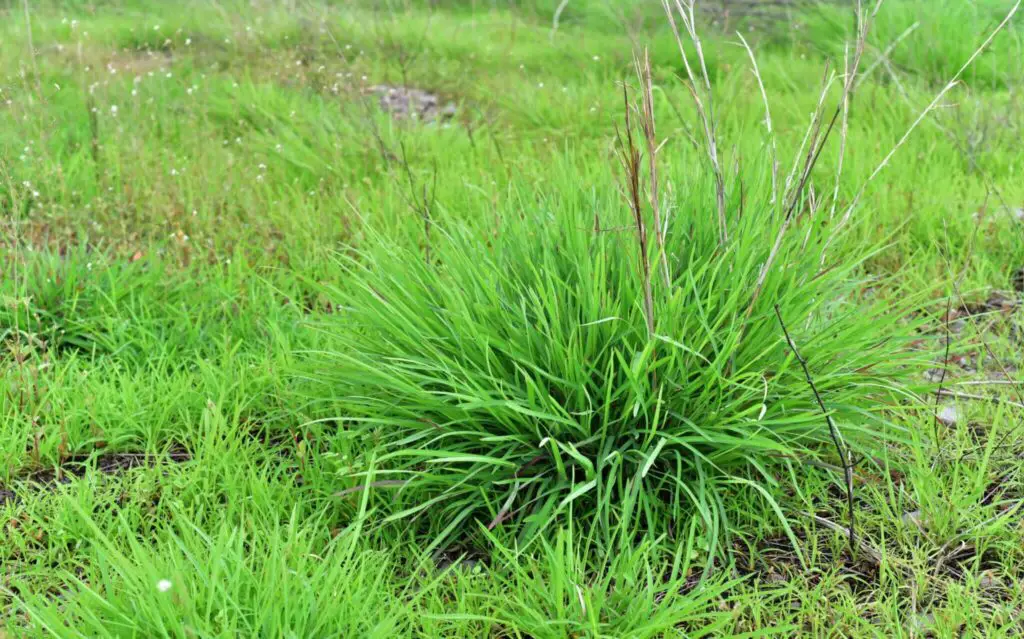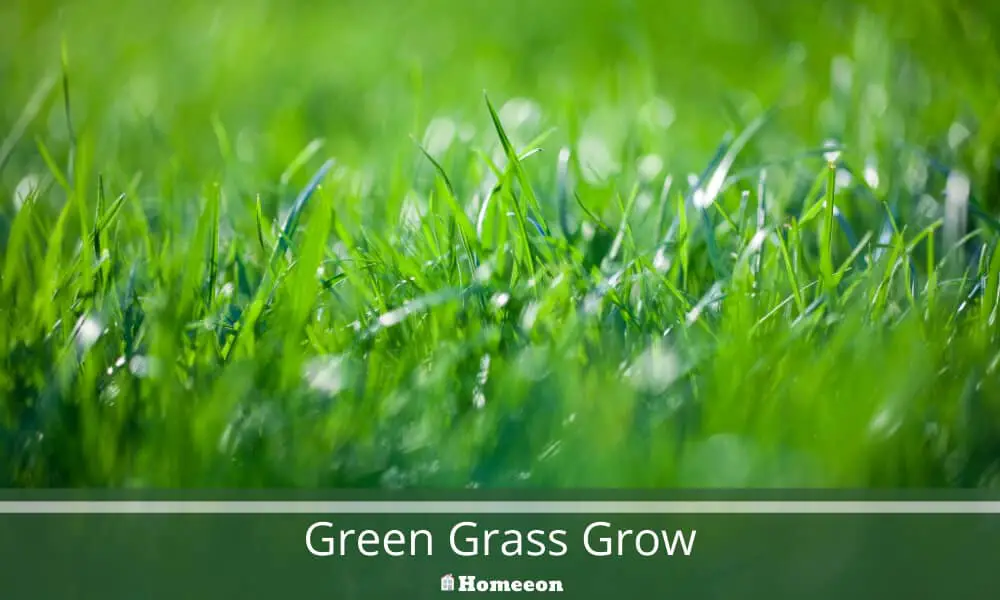Last Updated on August 10, 2023 By Emma W. Thomas
Green grass grows with essential factors like sunlight, water, nutrients, and proper soil pH. Adequate sunlight (at least 6 hours a day), regular watering (about 1-1.5 inches per week), balanced fertilization, and soil pH between 6.0 and 7.0 promote healthy grass growth.
What Makes The Green Grass Grow?
Green grass is a universal symbol of a healthy and thriving environment. There’s something undeniably captivating about a lush, green lawn that is pleasing to the eye. But have you ever wondered what makes the green grass grow? Today, we explore the key factors that contribute to the growth and vibrancy of green grass.
- Sunlight: Just like any other plant, grass needs sunlight to grow. Sunlight is crucial for photosynthesis, the process by which plants convert sunlight into energy. This energy fuels the growth and development of grass, resulting in its green color.
- Water: Adequate water supply is essential for the growth of green grass. Water is responsible for delivering essential nutrients to the roots of the grass. Additionally, water helps maintain the turgidity of the grass blades, allowing them to stay upright and lush.
- Nutrients: Grass requires a balance of essential nutrients to thrive. These nutrients include nitrogen, phosphorus, and potassium, commonly known as NPK. Nitrogen promotes healthy leaf and stem growth, phosphorus aids in root development, and potassium improves overall plant health and disease resistance. Fertilizers specifically formulated for grass can provide these nutrients.
- Soil quality: Good soil quality is vital for healthy grass growth. Soil should be well-drained to prevent waterlogging, as excessive moisture can lead to root rot. Moreover, the pH level of the soil affects nutrient availability to the grass. Aim for a slightly acidic pH of around 6 to 7 for optimal grass growth.
- Mowing and maintenance: Regular mowing and proper maintenance help ensure healthy grass growth. Mowing at the correct height encourages thicker, stronger grass. It’s recommended to not remove more than one-third of the grass height in a single mowing session. Additionally, removing weeds and aeration can improve the overall health and appearance of the lawn.
- Disease and pest control: Like any other plant, grass is susceptible to diseases and pests. Proper disease and pest management techniques, such as regular inspection, appropriate watering practices, and prompt treatment, can prevent damage and maintain a healthy lawn.
- Climate and weather conditions: Different grass species thrive in different climates. It’s essential to choose grass varieties that are well-suited to the local climate. Factors such as temperature, rainfall, and humidity play a significant role in the growth and maintenance of green grass.
In conclusion, the growth of green grass is dependent on several key factors. From sunlight and water to proper soil quality and maintenance, each aspect contributes to the vibrant, lush appearance of healthy grass. By taking care of these factors, you can enjoy a beautiful, green lawn that will make your outdoor space even more inviting.
How Do I Make My Grass Dark Green?

You can make your grass dark green by use of the correct fertilizer and at the right time. A lawn fertilizer with a high concentration of nitrogen and a low percentage of phosphorous is suitable for dark-green grass. The fertilizer should have a low release of nitrogen to prevent it from getting into the plants at once as this can lead to rapid, weak growth.
You can spread granular fertilizer over the lawn every 6-8 weeks of the growing season.
How To Improve Your Lawn And Make It Green
Are you looking forward to having a green, healthier lawn that is ever beautiful? Here’s what to do
1. Aerating Your Lawn
Your lawn is among the most commonly used areas of landscaping, more so if you have pets and children. As a result, the soil gets very compacted beneath the grass. Frequent mowing can also cause soil compaction, which may, in turn, lead to problems with water drainage, air circulation, and absorption of nutrients. Organisms such as earthworms that are beneficial to the soil may also not survive in such soil.
To get greener and healthier grass, you will have to aerate your lawn regularly. Punch 3-inch deep holes throughout your yard to give your grass a suitable medium to grow in. Digging holes help to loosen your soil and provide better air circulation as well as allow your grass to utilize the nutrients and water. Micro-organisms will also survive in the aerated soil and break down any thatch build-up.
You can aerate your yard by use of simple handheld aerating equipment or by hiring a large aeration machine. Make sure that you aerate the lawn at least once a year.
2. Water Deeply, But Less Frequently
Your grass requires enough water to grow green. Water your lawn deeply but less frequently to enable the roots to grow deep down the soil. The grass will remain green and healthy even during drought or scorching weather. You can water once a week with 1 inch of water, but the amount can vary depending on the soil type, species of grass, or local weather conditions.
You can know if you are watering 1 inch of water by conducting a simple test. Arrange a series of containers all over your lawn and turn on the sprinklers. Continue to water until the water level is 1 inch in most of the boxes. Use the same test to check if the sprinklers are working right. If there is a significant difference in the depth of water across the containers, it means there is an uneven distribution of the liquid, which may lead to dry patches in the yard. Adjust your sprinkler head but avoid over-watering the grass.
To know when to water again, touch the soil to check if the first 3-4 inches are dry. Test the moisture of the earth using an electronic soil tester or a screwdriver or trowel to open the soil and use your finger to feel it. You can use water crystals (water-absorbing gel polymers) to help your grass retain moisture.
Be sure to water your grass early in the morning when the weather is calm to minimize evaporation.
3. Cut Your Grass To The Recommended Height
If you cut your grass to the correct height, it will help it to grow strong and healthy. Make sure that you know the recommended size of your grass type and do it right. Use a lawnmower with sharp blades to cut the grass effectively.
4. Use Natural Fertilizers
Use natural lawn fertilizers instead of synthetic ones since they work better. Natural and organic lawn fertilizers make your lawns greener than human-made products, and they are also environment-friendly and safe for your family.
5. Reuse Your Grass Clippings
You can allow your lawn to reuse the clippings produced by mowing instead of throwing them away. Grass clippings decompose fast and give the essential nutrients back to the soil. The cuttings also act as a natural mulch and help the grass to retain moisture. Grasscycling also helps in saving time used taking care of your lawn, and it improves soil texture, minimizes the need for fertilizer, and helps prevent waste that goes to the landfill.
You can use a reel mower since it is accurate, quiet, easy to use, and leaves the grass in the right place. You may also compost your grass by using a simple compost bin if you cannot stand the sight of grass cuttings in your yard.
6. Use Of Corn Gluten Meal
Corn gluten meal is a natural fertilizer and herbicide for organic crops and turf grass. The product is a completely natural byproduct of the wet-milling process for maize. It also helps control weeds in your lawn and keeps the grass fertilized.
7. Convert Your Garden And Kitchen Waste Into Manure
You can compost your grass clippings, and kitchen waste then uses it for your lawn. Adding this compost to your yard helps to produce green grass and other garden crops. Compost has various benefits including;
- Improving water drainage in sandy and clay soils
- Produces slow release of vital nutrients and enhances root growth
- Eliminates garden pests and soil-borne plant diseases
- Protects soil from erosion
- Helps to recycle kitchen and garden waste
- Helps to balance the soil pH levels
- Attracts beneficial worms, insects, and other organisms
8. Use Mycorrhizal Root Builder
Mycorrhizal fungi are soil organisms that are beneficial to the root system of your grass and garden plants. They help the grass and plants to absorb water and vital nutrients. Mycorrhizal root builder allows the fungi to work more efficiently

Final Word
You can have a green, healthy, and beautiful lawn by applying the correct measures to it. Follow the procedures detailed above and get your neighbors to admire your yard. You will also enjoy carrying out your outdoor activities in your compound.
References:
https://www.milorganite.com/blog/Lawn/what-makes-grass-green
https://news.okstate.edu/articles/communications/2022/how_the_green_grass_grows.html
Emma is a graduate of Domestic Science or Family and Consumer Sciences (Home Economics) from the University of Wisconsin. She has 7 years of experience Working with the strategic section of BestBuy and now writing full-time for Homeeon.
From Managing the Home, Interiors, Cleaning, and Exteriors to Gardening and everything about Making A Home Liveable – is her passion and this Homeeon is the result of this.
Emma loves decorating her home with the best stuff found online. She cares about quality over anything and writes reviews about them here in Homeeon. Get in touch with her over Pinterest.
Keep reading her blogs.

